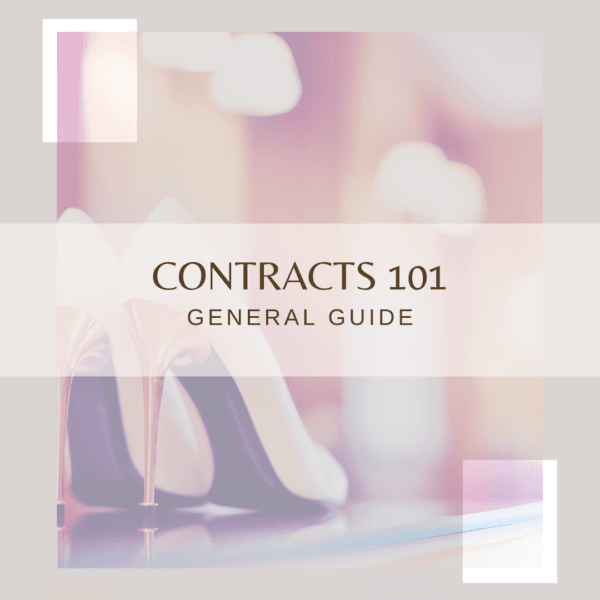How to Optimize for Growth
How Your Business Structure Impacts Taxes goes beyond just legal protection—it directly affects how much you pay in taxes. Whether you’re a sole proprietor, LLC, S-Corp, or C-Corp, understanding tax implications can help you optimize deductions, reduce liabilities, and keep more profit in your pocket.

Sole Proprietorship & Single-Member LLCs: How your business structure impacts taxes
When you operate as a sole proprietorship or a single-member LLC, your business income isn’t taxed separately—it flows directly onto your personal tax return. This is known as pass-through taxation, which simplifies filing but also comes with some financial considerations.
How Taxes Work
As a sole proprietor or single-member LLC, you’ll report all business income and expenses on Schedule C of your personal tax return (Form 1040). This means:
- You pay income tax on your business profits at your individual tax rate.
- You also owe self-employment taxes (15.3%) to cover Social Security (12.4%) and Medicare (2.9%)—the same taxes that an employer typically withholds for W-2 employees.
For example, if your business earns $80,000 in profit, you’ll pay:
- Self-employment tax of $12,240 (15.3% of $80,000).
- Income tax based on your federal and state tax brackets.
Deductions to Reduce Your Tax Burden
The good news? You can offset your taxable income by claiming business deductions, which lower the amount of profit you’re taxed on. Some key deductions include:
- Home Office Deduction – If you use part of your home exclusively for business, you can deduct a portion of rent, utilities, and maintenance costs.
- Business Equipment & Supplies – Computers, office furniture, software, and materials used for work can be written off.
- Vehicle Expenses – If you drive for business purposes, you can deduct mileage or actual vehicle expenses like gas and maintenance.
- Health Insurance Premiums – If you’re self-employed and pay for your own health insurance, you may be able to deduct your premiums.
- Retirement Contributions – Contributions to a SEP IRA or Solo 401(k) can lower your taxable income while helping you save for the future.
The Self-Employment Tax Challenge
One of the biggest financial hits for sole proprietors is the self-employment tax. Unlike W-2 employees, who split Social Security and Medicare taxes with their employer, you’re responsible for the full 15.3% yourself. This can add up quickly as your income grows.
Tax Strategy Tip: Consider an S-Corp Election
If your business earns $75,000 or more in profit, it might be time to look at S-corp taxation. By electing S-corp status, you can pay yourself a reasonable salary and take the remaining profits as distributions, which aren’t subject to self-employment tax.
For example:
- If your business earns $100,000, you might pay yourself a $50,000 salary (subject to payroll taxes) and take the remaining $50,000 as distributions, reducing your overall tax burden.
- This strategy requires proper payroll setup and IRS compliance, but it can save thousands in taxes annually.
Partnerships & Multi-Member LLCs: Pass-Through Taxation
When two or more people go into business together, they often form a partnership or a multi-member LLC. These structures allow profits and losses to flow directly to the owners’ personal tax returns—this is called pass-through taxation. Unlike corporations, these entities don’t pay taxes at the business level. Instead, each partner or member reports their share of income on their personal tax return.
How Taxes Work for Partnerships & Multi-Member LLCs
- The business does not pay corporate income tax.
- Profits and losses pass through to the owners based on their ownership percentages.
- Owners report income on their personal tax return (Form 1040, Schedule E).
- The business must file Form 1065 with the IRS to report overall earnings.
For example, if a two-person partnership earns $200,000 in profit and ownership is split 50/50:
- Each partner reports $100,000 in taxable income.
- Each partner also pays self-employment tax (15.3%) on their share unless the business elects S-Corp status.
Additional Compliance Requirements
Unlike sole proprietors, partnerships and multi-member LLCs must:
- File Form 1065 annually to report business income to the IRS.
- Issue Schedule K-1s to each partner, detailing their share of profits and losses.
- Have a partnership agreement that outlines profit-sharing, management responsibilities, and exit strategies.
Tax Strategy Tip: Profit Distribution Planning
Unlike a salary, partnership distributions aren’t subject to payroll taxes, but self-employment taxes still apply. To reduce tax burdens:
- Consider electing S-corp status if income is high enough.
- Use expense reimbursement plans to shift taxable income into deductible business expenses.
- Structure profit-sharing agreements to balance tax liabilities among partners.
S-Corps: The Middle Ground for Tax Efficiency
An S-Corporation (S-Corp) offers a tax advantage by allowing business owners to avoid self-employment tax on some income. Unlike sole proprietorships and partnerships, S-corps let owners split earnings between salary and distributions, lowering payroll tax obligations.
How Taxes Work for S-Corps
- The business itself doesn’t pay corporate income tax.
- Owners must pay themselves a reasonable salary (subject to payroll taxes).
- Any remaining profits can be taken as distributions, which are not subject to self-employment taxes.
For example, if an S-corp earns $150,000 in profit, the owner might:
- Pay themselves a $70,000 salary (subject to payroll taxes).
- Take $80,000 in distributions, avoiding self-employment taxes on that portion.
Compliance Requirements for S-Corps
- File an S-corp election (Form 2553) with the IRS.
- Pay reasonable salaries—underpaying yourself raises red flags with the IRS.
- File Form 1120S for corporate tax returns and issue Schedule K-1s to shareholders.
Tax Strategy Tip: Pay Yourself a Salary + Distributions
- Your salary should match what someone in your role would earn.
- Take the rest as distributions to reduce payroll tax liability.
- Avoid excessive distributions, as the IRS closely watches for tax avoidance.
C-Corps: Tax Complexity & Growth Potential
When considering how your business structure impacts taxes, it’s important to evaluate whether the benefits of a C-corporation (C-corp) outweigh the challenges of double taxation. A C-corporation (C-corp) is a separate legal entity from its owners, meaning the business itself pays taxes on profits.
How Taxes Work for C-Corps
- The corporation pays corporate income tax on profits (21% federal tax rate)
- If profits are distributed as dividends, shareholders also pay personal income tax on that income.
For example, if a C-corp earns $500,000:
- The business pays $105,000 in corporate tax (21%).
- If the remaining $395,000 is paid out as dividends, shareholders also pay tax on those dividends, leading to double taxation.
Why Choose a C-Corp?
- Best for businesses seeking outside investors and venture capital.
- Allows unlimited shareholders (unlike S-corps, which have limits).
- Can offer stock options and employee benefits that attract top talent.
Tax Strategy Tip: Minimize Taxable Income with Deductions
- Reinvest profits into research & development (R&D tax credits).
- Offer fringe benefits like health insurance, life insurance, and retirement plans.
- Pay higher salaries instead of dividends to reduce taxable profits.
Tax Planning Strategies for Any Structure
No matter what business structure you choose, smart tax planning can reduce your tax burden and improve cash flow.
Maximize Deductions
- Deduct business expenses like rent, utilities, marketing, and legal fees.
- Write off travel expenses if they’re business-related.
- Use depreciation for expensive equipment and vehicles.
Retirement Contributions
- Sole proprietors & LLCs: Contribute to a SEP IRA or Solo 401(k) for major tax savings.
- S-corps & C-corps: Set up a corporate retirement plan to reduce taxable profits.
Entity Restructuring
- Start as a sole proprietor or LLC and transition to an S-corp when profits grow.
- Convert to a C-Corp if you plan to raise capital or reinvest profits.
Quarterly Tax Payments
- The IRS requires businesses to make estimated tax payments if they expect to owe more than $1,000 in taxes.
- Missing payments leads to penalties, so plan ahead and budget for tax season.
Conclusion
Your business structure directly impacts your taxes—choosing the right one can save you thousands every year. Whether you’re a sole proprietor looking to minimize self-employment taxes, a partnership balancing profit distribution, or a growing company considering an S-corp or C-corp, understanding these tax rules helps you make smarter financial decisions.
Need a game plan? Let’s make it happen.
Grow Your Retail Empire with Proven, Scalable Strategies
Discover three ways to elevate your business—choose the path that suits your goals best.
We’ll do the heavy lifting so you can focus on running your business.
You won’t be doing this alone; we’ll walk you through every step.
No Burpees, Just Flexing! Weekly Workouts for a Stronger Bottom Line.
Resources
The Retail Gym Your Weekly Business Workout
No sweat, just success! The Retail Gym is your weekly business workout designed to help you lift your retail strategies, tone your sales skills, and flex your competitive edge—without a single burpee.






